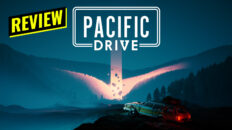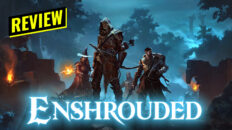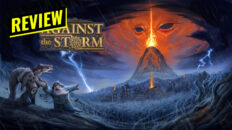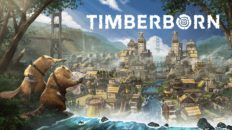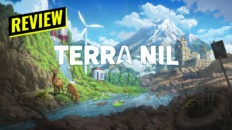Valheim has taken the world by storm with over 5.7 million copies sold as of today. What has made this particular survival so popular? The answers can be found in some ingenious design choices that help make it an easy sell. By taking elements from Minecraft, The Elder Scrolls, and Breath of the Wild, Iron Gate has crafted a crafting game that appeals to a wide audience, and smooths out the edges that sometimes come with the territory.
The survival aspects of Valheim are simple and straight forward. You can eat food to gain buffs to your health and stamina, but don’t suffer starvation if you go without eating. This means there’s no omnipresent fear of dying because you forgot to bring food as food only gives you boosts. In fact, you could say that eating makes the game easier which is a good incentive to remember your lunch bag. Nothing feels better than running low on stamina only to pop a few blueberries for the last leg of a long expedition. It encourages you to explore more and take risks you normally wouldn’t.
By pulling exploration straight from Breath of the Wild, Valhem never falters in providing new, exciting places to discover without much in the way of guidance. You’re encouraged to mark up your map with as many custom markers as you want, so you can return to that Crypt or special resource node when you’re ready to harvest it. It also only gives a handful of actual objectives, making you decided how and when to accomplish them. It’s a high level of freedom that let’s players progress at their own pace. You can choose to rush through and complete it as quickly as possible or spend time crafting tools and honing your skills before taking on the game’s bosses.
The skill system also hearkens back to The Elder Scrolls IV: Oblivion in which you simply level up and improve your attributes by performing them. Jumping around all day will increase your jump stat, meaning you will use less stamina when jumping. Mining more will make you more efficient at mining. There are no skill points to earn or perks to unlock, you just get better as you perform actions. Most of the skills are hidden as well, or unlocked over time, so there will always be something new to improve. It makes the often mundane process of resources collection, hunting, and building more rewarding.
The building aspect of Valheim is restrained, but versatile. You can only construct using certain blueprints, unlike say Minecraft that let’s you build essentially anything as long as it’s made of blocks. This limitation allows for gravity to be taken into account. That’s right, you have make sure your house has a sturdy frame or else it’ll all come crashing down. You’re also limited to materials and designs that are Viking-era specific. This opens up the opportunity to construct legitimate looking longhouses and huts. You also need to maintain your buildings as weather and enemies will cause wear and tear over time.
Iron Gate are clearly huge fans of the games and genres they chose to borrow from. They’ve masterfully stitched together the last 10 years or so of gaming trends. Then threw on a retro-3D aesthetic that hearkens back to old N64/PS1 era polygonal designs, and married it with modern lighting and volumetric effects. The result can lead to some truly breathtaking scenes that are easy on the eyes, and don’t get in the way of the gameplay. After playing for several dozen hours the appeal of Valheim shows it’s face, and its many facets ensure it will remain popular for a long time to come.


